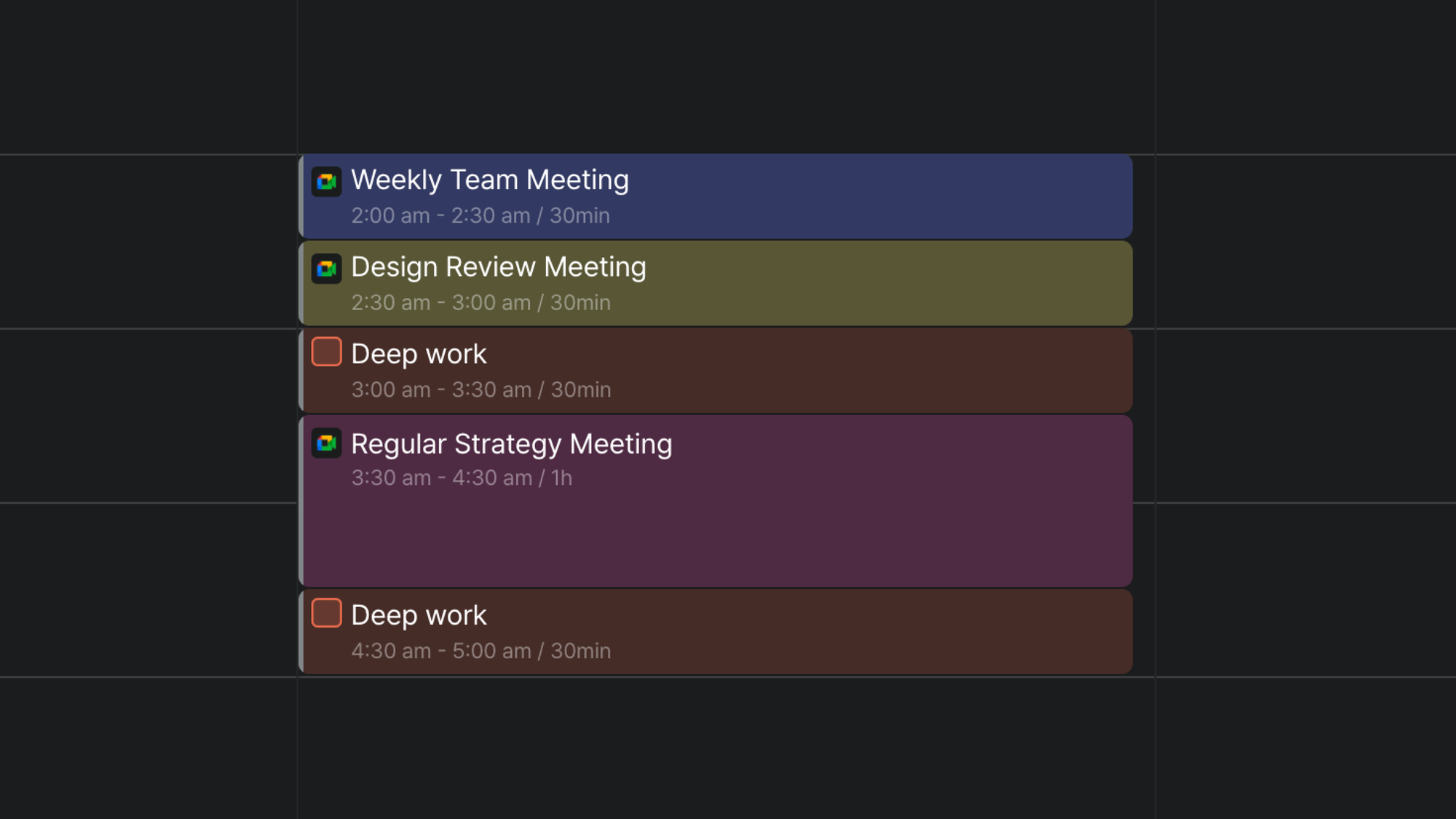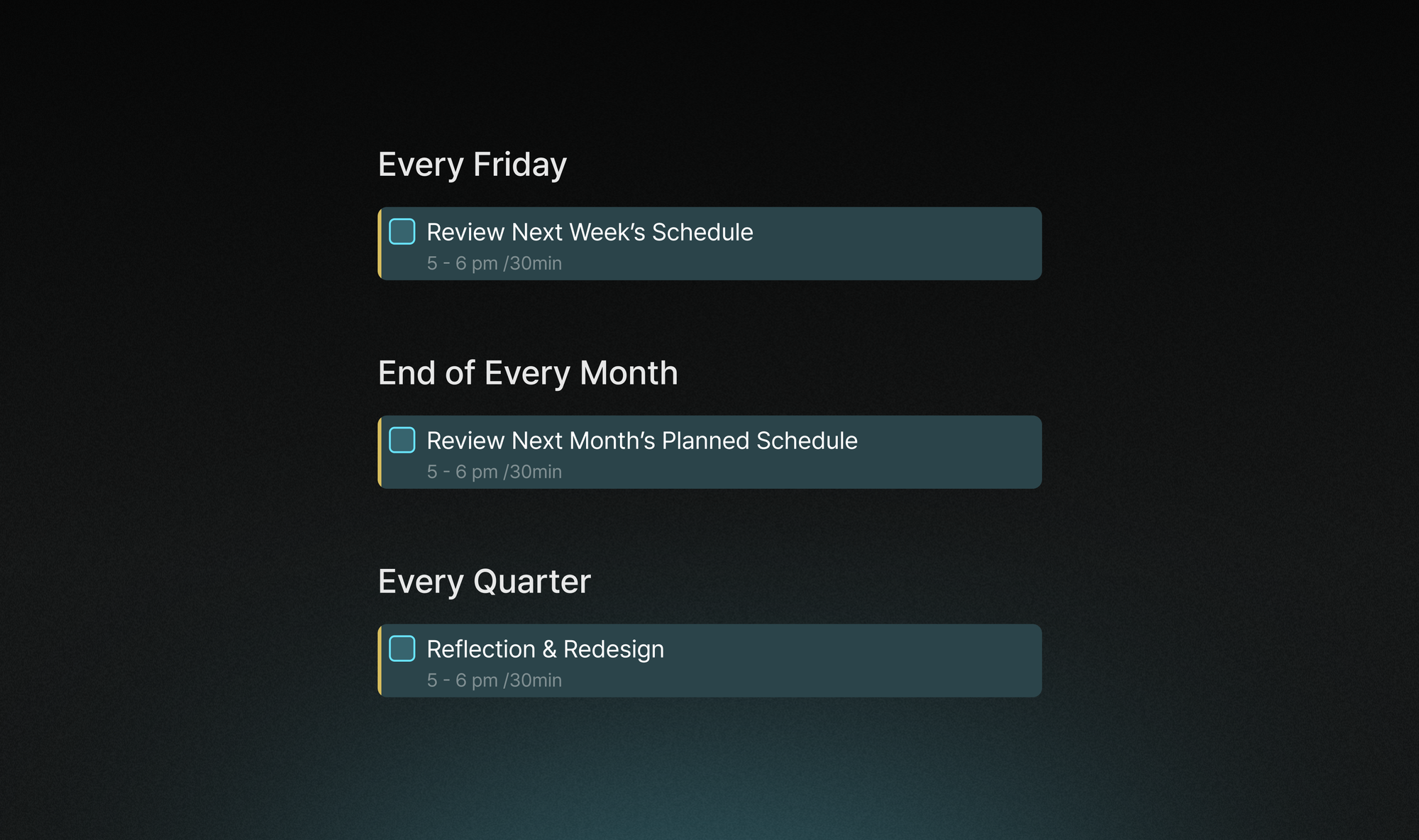Why the Dropbox CEO Deleted Every Employee Calendar

One morning, Dropbox employees came to work, opened their calendars, and were stunned. The meeting slots that had been packed the day before had all disappeared. Recurring meetings, check ins, weekly reports, team meetings… the entries that would normally fill their calendars had been wiped without a trace.
Just as confusion spread, a company wide email arrived from CEO Drew Houston.
The subject line was firm: "Armeetingeddon has landed"
"Have you checked your calendar I think you will feel lighter. I flipped the switch at midnight. Ah, is it not fantastic"
This was not a line meant only to startle employees. It was a bold solution to a fundamental problem that had emerged as a fast growing startup scaled up.
A Calendar Reset Clean
Many companies run campaigns to reduce unnecessary meetings. Most fail. Why Because of inertia.
Graham Abbott, who led the Office team at Dropbox, put it this way. "We had become bloated with meetings."
As the organization grew, recurring meetings that had once been reasonable lost their purpose yet remained on the calendar.
The problem lies in the question itself, "Which meetings should we delete" That question tries to optimize within the current frame. Dropbox asked a more fundamental question:
"Why does this meeting exist"
To answer that, you have to start from a blank page. So Drew Houston deleted all recurring meetings. They did not just reduce meetings. They fully reset the calendar.

Two Weeks of Forced Reflection
Armeetingeddon was not a one off event that ended with deleting meetings. Dropbox declared a two week Sanctuary period. During this time, no recurring meetings could be scheduled again.
More surprising was the enforcement. Every night, if anyone had quietly rescheduled a recurring meeting, the system automatically deleted it. This was not a mere suggestion. It was an organization level intervention made explicit.
Those two weeks gave employees time to think, on purpose:
- Is this meeting truly necessary
- What exactly are we trying to achieve with it
- Is there a more efficient way
To schedule a meeting again, the full group of attendees had to discuss and agree on its necessity. Each meeting was forced to have a real intention and purpose.
What It Means to Redesign the Calendar
After Armeetingeddon, meetings at Dropbox became shorter and more productive. Instead of wandering off topic, they focused on decisions.
The numbers were even more striking. Two years later the employee count had almost tripled, but the number of meeting rooms had grown by only about double. Even recently, recurring meetings had barely increased compared to headcount growth.
The meaning is clear. Even as an organization grows, meetings do not have to expand automatically. They balloon only when we neglect our calendars and let inertia take over, leaving meaningless meetings to linger as if they were inevitable.
At Dropbox headquarters there is still a conference room named "Armeetingeddon" to commemorate that day. Abbott said, "Armeetingeddon will definitely happen again." The point is that this should not be a one time stunt but a regular reset to keep the organization healthy.
Who Designed Your Calendar
Open your calendar now. Who designed the meetings and entries that fill it
In most cases the answer is nobody. They simply accumulated over time. Someone once suggested, "We probably need a recurring meeting," and most people accepted without objection. A weekly meeting for a project that started a month ago may remain even after the project ended.
Left unattended, a calendar accumulates entropy. Like a room that gathers dust when you do not clean it, a calendar fills with unnecessary entries when you do not manage it.
The fundamental question Armeetingeddon poses is this. Do you design your calendar actively, or do you allow it to be filled passively
The Essence of Calendar First Time Design
Many productivity experts talk about time management. Yet we cannot manage time. Everyone has the same twenty four hours. What we can manage is the placement of attention and energy.
A calendar is not just a place to record appointments. A calendar is a design tool that decides where and how much of your attention you will invest.
This is why Dropbox ran Armeetingeddon. Calendars stuffed with meetings fragmented employees attention and stole the time needed for deep work. The problem was not meetings per se, but meetings that had piled up without deliberate design.
Signals That You Need a Calendar Reset
How do you know if your calendar needs a reset Look for signs like these:
1. There is no transition time between meetings
A meeting ends and the next one starts immediately. There is no time to summarize what was discussed or prepare for what is next. At the end of the day you feel like you had many meetings but did not really accomplish anything.
2. You find yourself asking Why are we having this meeting
You sit there wondering why you need to be in the room. When the meeting ends it is unclear what was decided and what the next actions are.
3. Nobody remembers the origin of a recurring meeting
When someone asks, "Since when have we been doing this," no one can answer clearly. The original reason for the meeting has already been resolved, but inertia keeps it going.
4. There are no blocks for deep work
Your calendar is chopped into thirty or sixty minute chunks. You almost never have uninterrupted windows of two to three hours for focused work.
If you see these signals, your calendar needs a reset.
A Personal 'Armeetingeddon' How to Reset Your Own Calendar
You probably cannot delete all meetings across your organization at once like Dropbox did. But you can reset your personal calendar right now.
Step 1: Review
Make a list of every recurring entry and meeting on your calendar for the next two weeks. For each item ask
- What is the purpose of this meeting or entry
- When was the last time that purpose was actually achieved
- If this did not exist, what specific problem would occur
Step 2: Redesign from zero base
Do not look at the list. Start from a blank page. Change the question to
Not "Should we keep this meeting"
But "If I were starting from scratch to achieve this purpose today, how would I design it"
Step 3: Place essential blocks first
Do not fill in meetings and reactive items first. Instead
- Place two to three hour blocks for deep work first
- Place exercise, rest, and transition time
- Only then place meetings and calls
Step 4: Run a two week experiment
Live with the newly designed calendar for two weeks. As Dropbox set a two week Sanctuary period, you should also stick with the new approach for at least two weeks. Only then can you judge its real effect.
Your Calendar Should Reflect Your Intent
In two thousand eighteen at MIT, Drew Houston said this. "In many companies managers spend sixty percent of their time coordinating people and have little time left for creative work."
This is not just an organizational problem. It is personal as well. If you do not consciously choose where your time goes, other peoples priorities will fill your calendar.
Your calendar should visualize your priorities. If you decided, "This year I will focus on deep thinking and strategy," but there is no time for that on the calendar, the decision is meaningless.
Reset Is Not a One Time Act. It Is a Routine.
Dropbox named a conference room after Armeetingeddon. And Abbott said, "It will definitely be repeated."
Why repeat Because organizations and lives keep changing. The calendar structure that was optimal three months ago is not guaranteed to be optimal now. New projects start. Teams change. Priorities shift.
Make calendar reset a regular routine
- Every Friday review next weeks calendar and remove what is unnecessary
- At the end of each month re evaluate recurring entries for the coming month
- Each quarter run a full calendar audit and redesign
This is the heart of calendar first time design. It is not about making a perfect plan once. It is about continuously checking and adjusting your intent.

Start Your 'Armeetingeddon'
The Dropbox story sounds bold, but its essence is simple. Break inertia and redesign with intention.
Open your calendar now. Are those entries truly your choices, or did they just drift onto the page
Drew Houstons email ended like this
"Ah, is it not fantastic" The reason an empty calendar can feel fantastic is that it is a blank page of possibility.
This is not about reducing meetings. It is about resetting your calendar.
Your time must be designed by you. No one else will do it for you. Armeetingeddon can happen every day, whether at work or in your personal life.
